If you decided to visit Antarctica, you’d struggle to survive without specialist clothing and equipment. However, penguins manage to live there perfectly well as they have adapted to survive in their harsh environment. Animals and plants have special adaptations to allow them to thrive in their natural environment.
Animals need food, water, shelter and a safe place to have their offspring to survive. Over thousands of years, they adapt and change to live successfully in their habitat. Species of the same animal can even be adapted to live in different parts of the world. African elephants have bigger ears than Asian elephants as ears are used to cool the elephant down, and African elephants live in a hotter part of the world.
Adaptations can be how an animal looks; some animals are camouflaged to look just like their environment. Some animals have adapted to scare away predators, and others have adapted to be superhunters. Animals all over the world have developed unique adaptations for survival in their specific habitat.
I’ve compiled a list of 10 amazing animal adaptations demonstrating just a little of the diversity of animal life on our planet.
Once you’ve read through the list, design your own uniquely adapted animal by combining different animal adaptations. There’s a handy printable template at the bottom of this post.
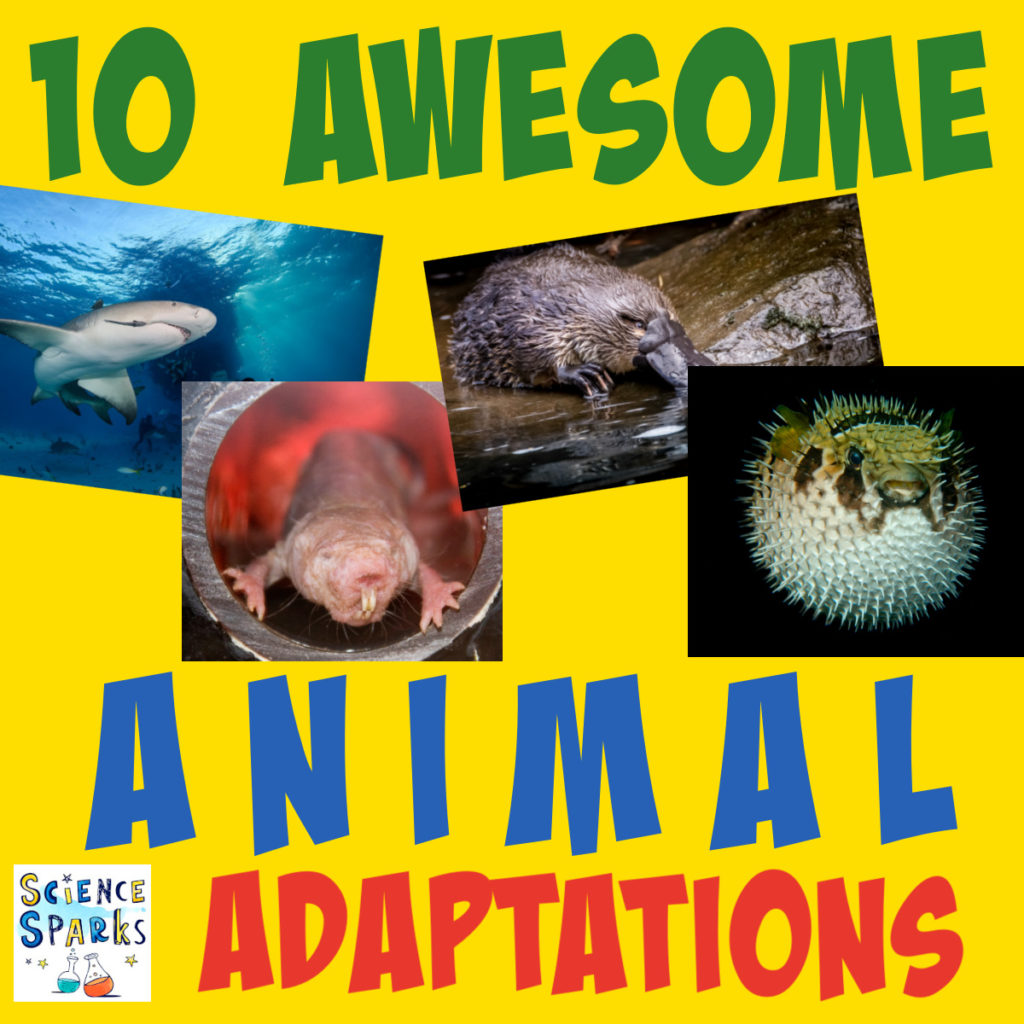
10 Awesome Animal Adaptations
Pufferfish – an amazing ability to puff up
The pufferfish is not a fish to cross. Pufferfish have stomachs that have evolved to be super stretchy, allowing them to inflate with water to scare predators away.
Pufferfish also contain a deadly toxin, making them highly dangerous if eaten!
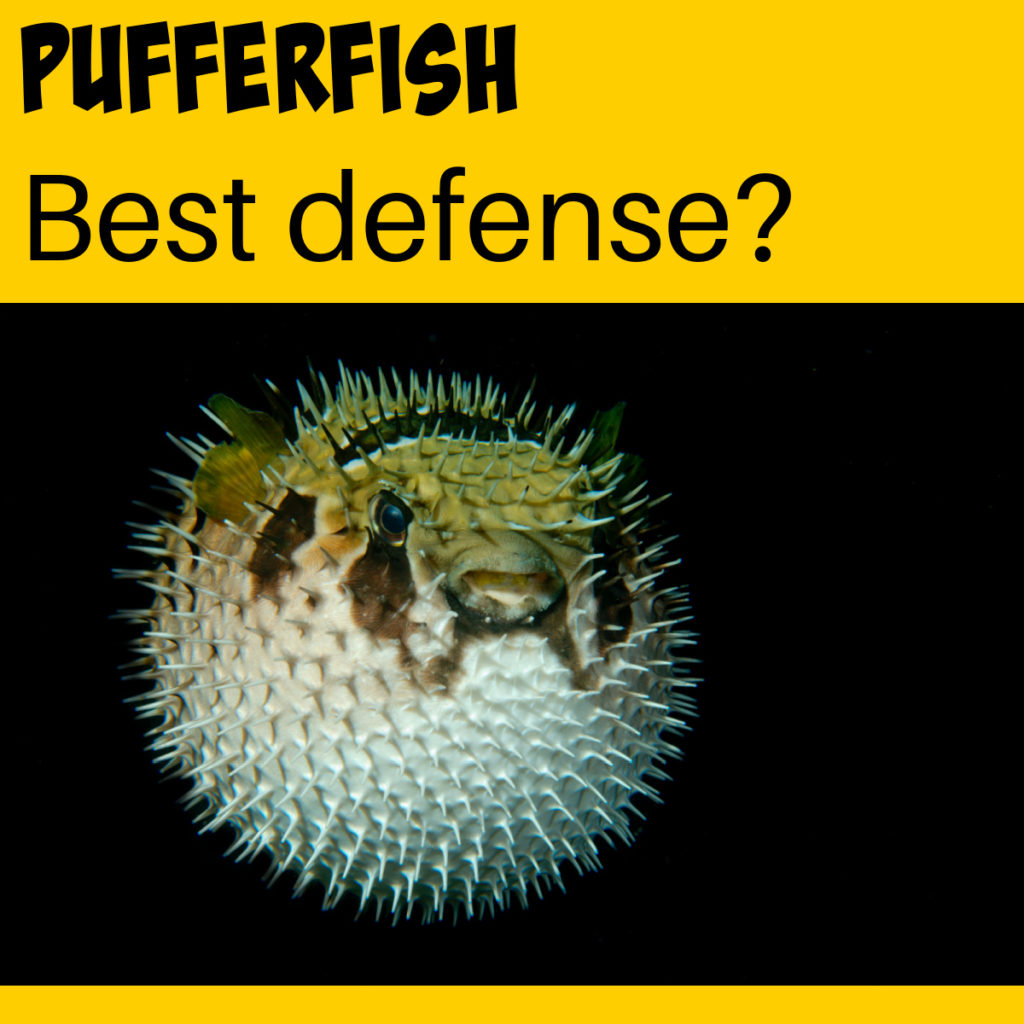
Elephants – big ears to cool down
Elephants are big animals that mostly live in hot places. They can’t sweat like humans, so they use their cleverly adapted ears to cool down. Elephant ears are thin with lots of tiny blood vessels called capillaries. When an elephant gets too hot, blood flows to the ears, where it loses heat, cooling the elephant down.
Elephant ears can also flap to act like giant fans.
African elephants usually have bigger ears than Asian elephants, who live in cooler climates.

Giraffe – very long neck
The long neck of a giraffe gives them a couple of unique advantages over other animals. They can reach food that’s REALLY high up and can see enemies from far away.
However, the downside of such a long neck is that it’s VERY hard for giraffes to drink water from the ground.

Hummingbird – super fast wings
Hummingbirds flap their wings so fast it’s a blur to the human eye. This very clever adaptation means they are the only bird that can fly backwards ( handy for avoiding predators ) and can hover for a long time!

Platypus – electric field detecting bill
The Platypus is a unique species that appears to be a blend of several animals you’re probably familiar with. It has webbed feet and a bill like a duck, a tail like a beaver and fur like an otter! Don’t be fooled by its cuteness, though, as males have a venomous spur near their back leg!
One interesting adaptation of the Platypus is that its special bill can detect electric fields generated by other animals, which helps it hunt for food.
This is called electrolocation.

Stick Insects – super camouflage
Stick insects have a camouflage superpower! They usually look like either sticks or leaves and can hide remarkably well in their natural environment.

Naked Mole Rats – interesting incisors
Naked Mole Rats live underground. They can’t see or hear very well but have special long incisors that can move independently of each other and very strong jaws. This unique adaptation allows them to tunnel underground for miles!

Camel – extra long eyelashes
If you were to walk through the desert, you’d probably have a bit of trouble with sand getting into your eyes and nose.
Camels have adapted perfectly for this scenario and have extra long eyelashes to help prevent sand, dust and other particles from getting into their eyes.
Camels can also close their nostrils to stop sand from getting in their nose and, of course, have one more very special feature, a hump!
Camels store fat in their hump to use for energy when times get tough and food is scarce!

Eagle – super sharp vision
Eagles have some of the sharpest vision of all animals. They have very large eyes for their skull size and a lot more cells on the back of the eye than humans, allowing them to see more clearly and at greater distances.
Eagles also have a 340-degree field of vision compared to the 180 degrees a human has.
However, eagles are not famous for their night vision. Eyes like an owl or a cat are better for seeing a night!

Shark – super smell
Sharks have the most incredible sense of smell. They can detect even very small traces of blood several miles away! Sharks can even tell which direction the smell is coming from, making them extreme hunters.

More Animal Adaptations
Stingrays have flat bodies with eyes on the top and a mouth on the bottom. This allows them to keep an eye out for predators while eating!
The fur of a lion blends into its sandy environment, providing some camouflage!
Polar bears have white fur and a thick layer of fat under their skin, allowing them to be camouflaged and stay warm.
Emperor penguins have blubber under their skin like polar bears and thick feathers to help them stay warm in the harsh environment of the Antarctic!
Which animal adaptation is your favourite? Would you like to be able to puff up like a pufferfish, smell your favourite meal from 3 miles away or have super vision?
Now you’re an animal adaptation expert, try this simple activity!
Animal Adaptation Activity
This easy animal adaptation activity gives children the chance to design the ultimate animal by combining different adaptations.
I’d love to see this resource in action, so please do share your mix-up animals!
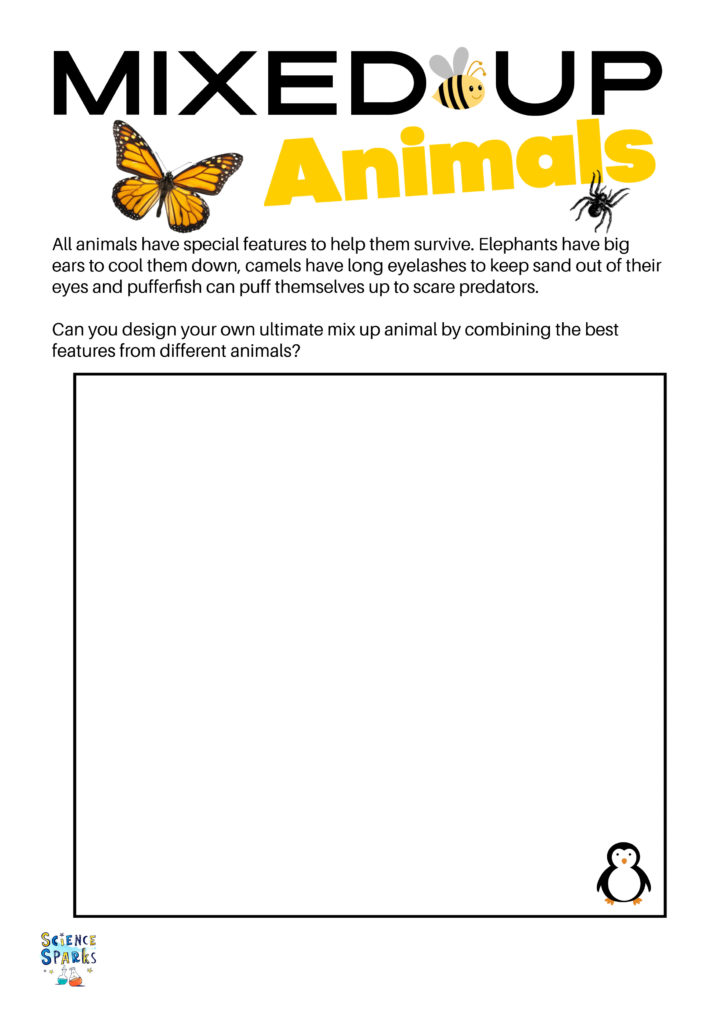

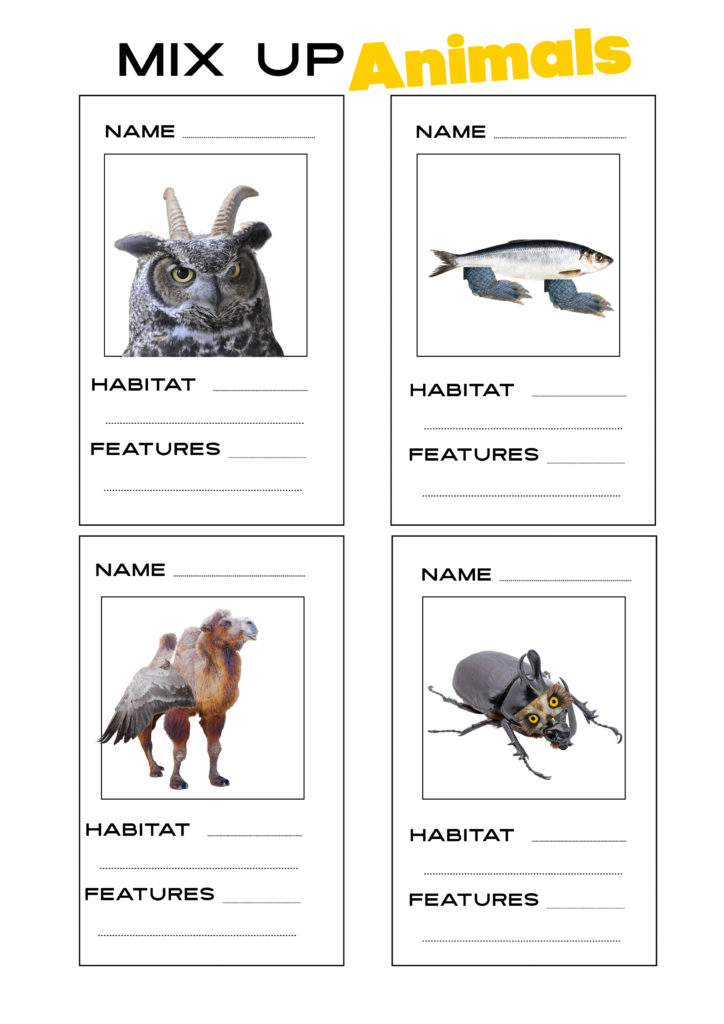
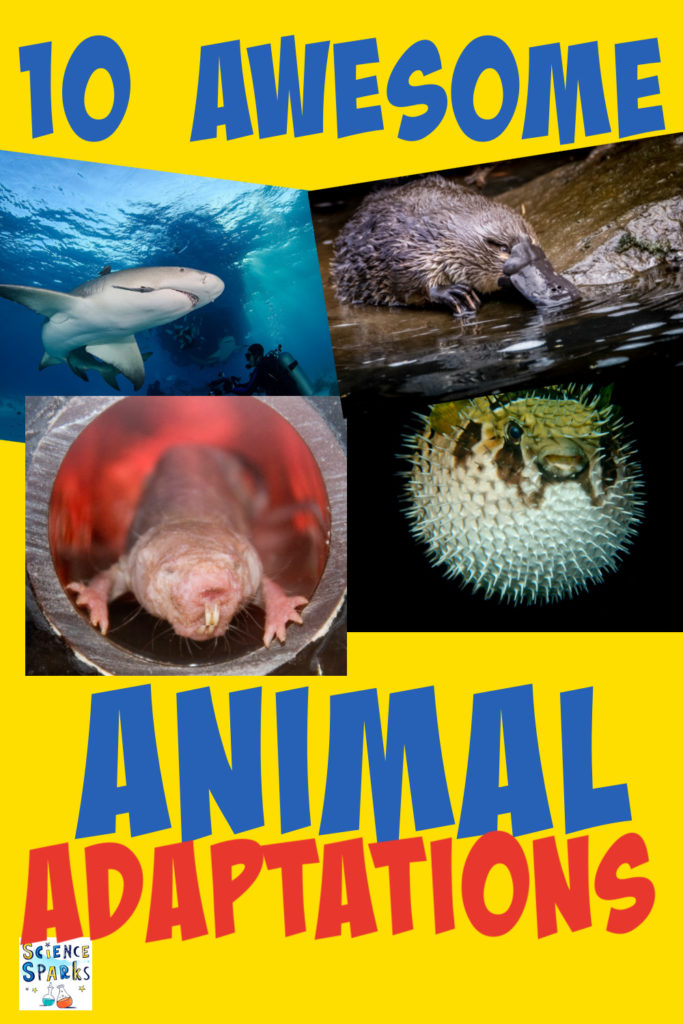
Last Updated on February 13, 2024 by Emma Vanstone

Leave a Reply